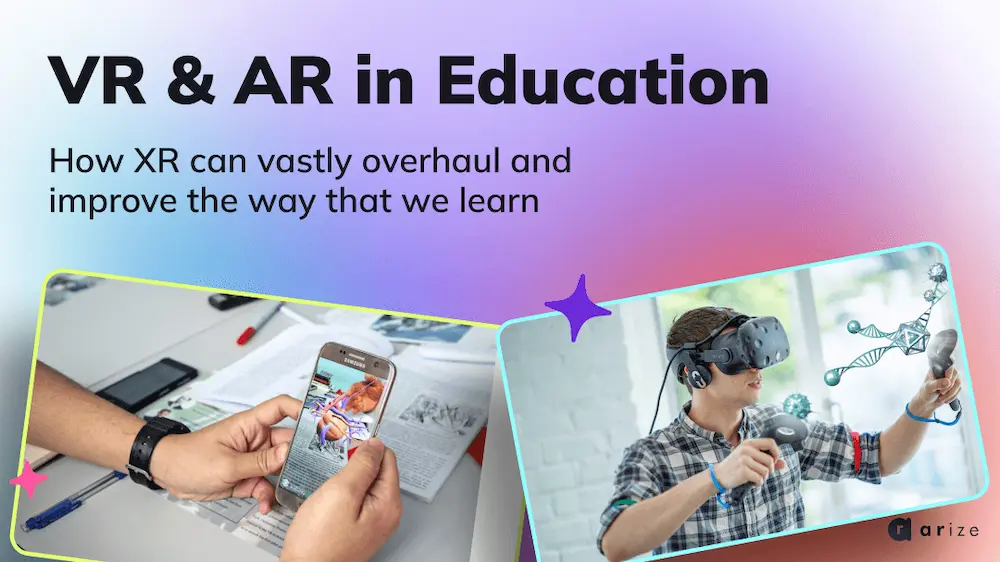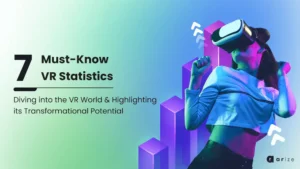“Extended Reality” is a term that collectively describes real and virtual combined environments. It consists of augmented reality (AR), Virtual Reality (VR), and mixed reality (MR). Industry experts believe that, together, these immersive technologies will disrupt the way businesses. Even whole industries will operate in the future. Healthcare, entertainment, and education are the industries predicted to be most affected by this powerful technology.
Improve Workplace Training
Education is a required field in XR, particularly VR, and AR. The way we learn has not significantly evolved for decades. While the formats have varied to a degree, the main methods are still essentially the same. XR can vastly overhaul and improve how we learn, not just in schools but in the workplace. XR has already begun to catch the attention of higher educational institutions. As they seek new ways to attract students, cut costs, and compete in a crowded field.
Defining the Different Realities
Before we get into how these realities will help the education sector. Here’s a quick refresher on VR and AR (for this article, we won’t be looking at MR):
Virtual reality (VR): The creation of entirely simulated environments.
Augmented Reality (AR): Superimposes audio and visual elements on the existing real-world environment.

New Ways of Learning
At its core, teaching is just the presentation of facts and theories. The more of this information that students can retain, the more successful a teaching method can be. Students who struggle to process information through a teaching method can become disengaged, and retention levels will drop. This applies regardless of whether we discuss school education, higher learning, or workplace training.
Here we’ll look at how virtual and augmented reality can help revolutionize how we educate and are educated.
A More Immersive Experience
VR can transport students to different places and times without leaving the comfort or safety of their school or home. Thanks to its highly immersive maturity. Immersive VR Education is already experiencing success in the UK with this method. Even as far back as 2018, it partnered with the BBC to create a VR experience entitled 1943: Berlin Blitz that placed students inside the cockpit of a Lancaster Bomber.
A mix of VR simulations and archive audio created a way to bring learning to life. They were making a natural, highly accessible learning experience for children.
Using AR and VR headsets, teachers can perfectly illustrate what they are explaining, helping students understand the concepts.
See the World
School trips are a time-honored method of making education exciting for children and taking them to art galleries, museums, or historical sites to engage them more with the source material.
Using VR, these trips can be experienced not only without leaving the school but also open up many more possibilities and options for classes to experience.

While you can use VR to simulate a neolithic cave dwelling or a WWII bunker, AR can take students anywhere in the world, whether it be the Louvre in Paris or the wilds of the Amazon, places no school would ever be able to let children experience up until now. They can even safely venture into an ant colony or the middle of an ocean storm to see what they are learning!
It also has the bonus of making experiences cheaper than traditional school trips, making them more accessible for those in school whose parents may be unable to afford to send them away or schools that can’t organize trips anywhere outside the local area.
Improve Education
It isn’t just in schools where AR and VR can aid learning. Both can be very helpful when it comes to training in the workplace too.
On the one hand, you have AR, which can help enhance on-the-job training by augmenting the environment in which training takes place, maybe by showing trainees instructions onscreen while performing a task (arrows pointing where to go, highlighting areas of interest, etc.). It will help trainees retain information and minimize the need to sit down, learn, and then put it practically to use, leaving less chance of a disconnect.
In terms of VR, it is the perfect environment to help simulate dangerous scenarios or situations that may be difficult to replicate in real life.
Imagine being a firefighter and being able to train in a VR simulation of a forest fire instead of just passively watching videos and not having any experience until the day comes that you need to put one out. It will make firefighters much better prepared, which could be the difference in saving lives.
The above examples are just a few ways VR and AR can help enrich the education world and make it much more effective, engaging, and in line with today’s increasingly tech-focused world.



